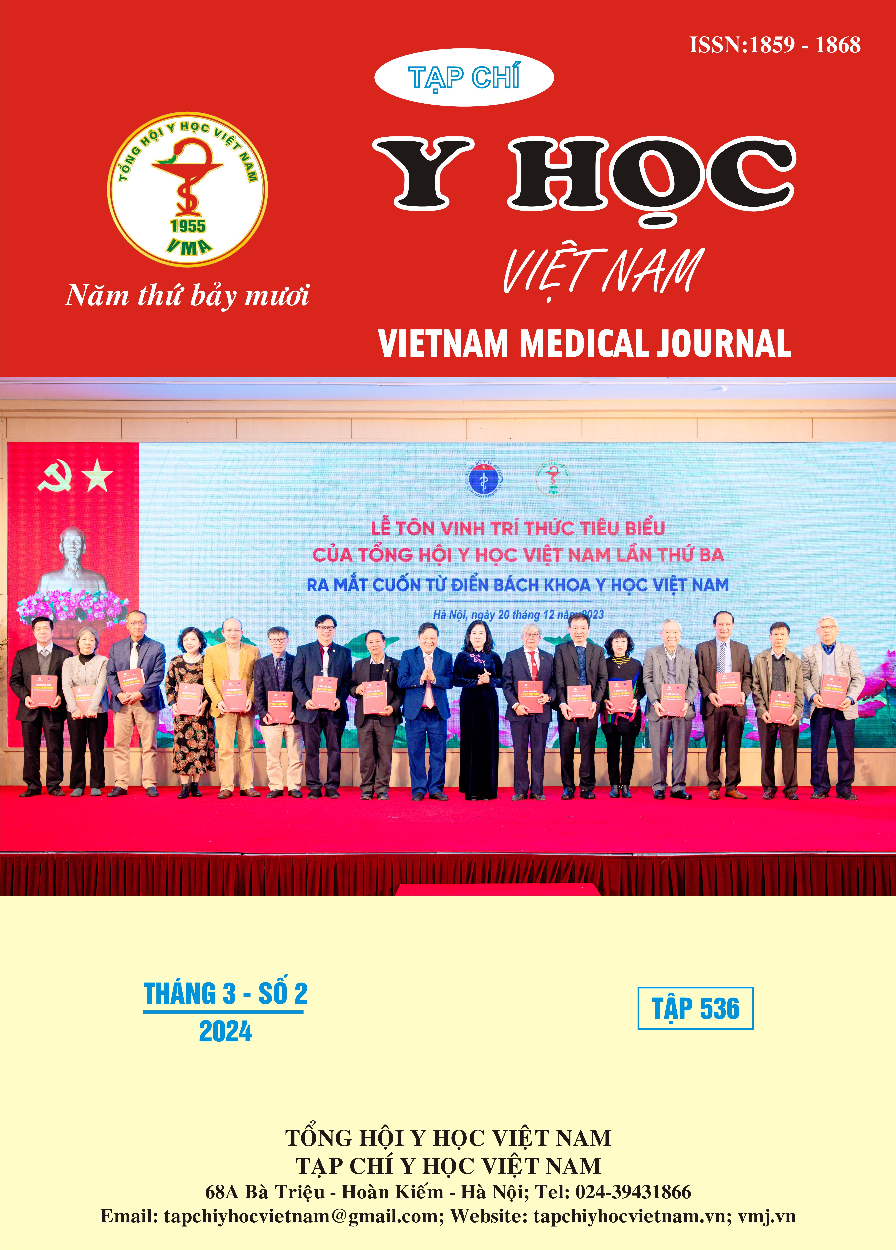THE RESULT OF SCREW FIXATION COMBINED WITH BONE GRAFT IN TREATING PSEUDARTHROSIS OF A HUMERAL SHAFT FRACTURE AT VIET DUC UNIVERSITY HOSPITAL
Main Article Content
Abstract
Purposes: Describe the clinical, radiological characteristics and evaluate the effectiveness of screw fixation combined with bone graft in treating pseudarthrosis of a humeral shaft fracture. Subjects and methods: a retrospective and prospective study on 41 patients with humeral pseudarthrosis complications, who were treated with internal fixation with a plate and bone graft at Viet Duc Hospital from January 2019 to June 2023. Results: Most of the patients were men of working age. Closed fractures were more common than open fractures, and hypertrophic pseudarthrosis was more common than atrophic pseudarthrosis. Pain and limited range of motion were the main symptoms. Most patients developed pseudarthrosis joints after only 1 intervention or surgery. After treatment, 70,73% of patients had no pain. The proportion of patients with straight humerus on X-ray before and after surgery increased from 2,44% to 97,56%. 82,93% bone healing reached a very good level, only 3 cases did not heal.Conclusion: The majority of patients with humeral pseudarthrosis were men of working age, with a closed humeral fracture (78,05%). 80,49 % of pseudarthrosis are hypertrophic. All patients had previous surgical treatment or procedures, of which 78,05% were screwed, but the symptoms of pain, limitation of motion and flexion of the limb were still existed. After screw fixation combined with bone graft, 82,93% of cases had very good results.
Article Details
References
2. R J. L’osteogenese et les retardes de consolidation et les pseudarthroses des os longs. Imprimerie des Sciences, Bruxelles. Published online 1960:315-525.
3. Trương Trung Văn. Đánh Giá Kết Quả Điều Trị Khớp Giả Thân Xương Cánh Tay Sau Phẫu Thuật. 2019.
4. Huang W, Zhang K, Zhu Y, Wang Z, Li Z, Zhang J. Genetic polymorphisms of NOS2 and predisposition to fracture non-union: A case control study based on Han Chinese population. PLoS One. 2018;13(3):e0193673.
5. David G. Lavelle. Delayed Union and Nonunion of Fractures. Vol 27. 11th ed. Campbell’s operative orthopedics; 2007.
6. Dương Đình Xuyên, Ngô Văn Toàn. Điều trị khớp giả xương cánh tay bằng kết hợp xương nẹp vít và ghép xương tự thân. Tạp chí Y học Việt Nam. Published online 2011.
7. Basile G, Avato FM, Passeri A, et al. Atrophic pseudarthrosis of humeral diaphyseal fractures: medico-legal implications and methodological analysis of the evaluation. Acta Biomed. 2022;93(3):e2022176.
8. Wang W, Yeung KWK. Bone grafts and biomaterials substitutes for bone defect repair: A review. Bioact Mater. 2017;2(4):224-247.


